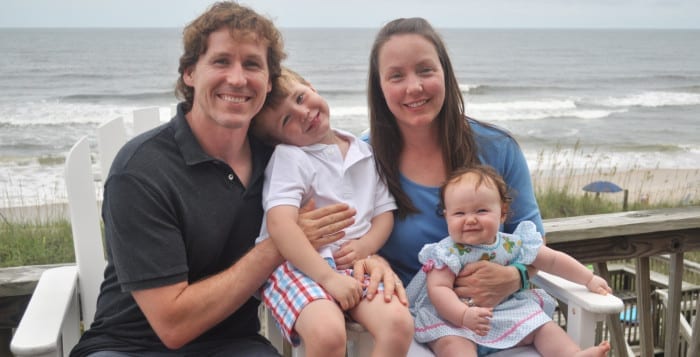When bacteria become resistant to antibiotics, they enter a category that spurs scientists and doctors to search for alternative remedies.
Bacteria can live singly, in what’s called the planktonic state, in groups or colonies, in which case they form a biofilm, or in numerous possibilities in between. In the biofilm state, they become more resistant to antibiotics, which increases the urgency to find a way to break up the bacterial party.
Elizabeth Boon, an associate professor of chemistry at Stony Brook University, has worked with a gas that, in some species of bacteria, appears to affect biofilm formation. While the details vary from one species to another, scientists have found that low concentrations of nitric oxide most often cause bacteria to leave biofilms.
Boon has discovered nitric oxide-sensing proteins in several strains of bacteria, which might help shed light on how this gas acts as a trigger for bacteria.
Boon’s discoveries are “innovative because they provide a previously important missing link between how bacteria behave in the human body and how the human system fails to counteract bacterial infection and the inflammation it causes,” explained Nicole Sampson, professor and chair in the Department of Chemistry.
Sampson, who called Boon a “rising star in chemical biology,” said her colleague’s work is “providing a much needed molecular explanation for the communication that occurs between bacteria and animals.”
Biofilms have implications for human health, Boon said. While they can be positive, generally speaking, she suggested, they are negative.
“A lot of diseases are caused by biofilms,” while biofilms may play a role with others as well, Boon said. “Open wounds that won’t heal are thought to be the result of biofilm injections around the wound, while people with cystic fibrosis get infections around their lungs.”
Biofilms also may play a part in hospital-borne infections. In a biofilm, bacteria are up to 1,000 times more resistant to antibiotics, Boon said. The exact concentration at which the bacteria switches between a signal from the gas to a group defense varies from one species of bacteria to another.
Similar to hemoglobin, which binds to oxygen in red blood cells and carries it around the body, this protein attaches to nitric oxide. The sensor protein usually causes a change that alters the concentration of cyclic di-GMP, a common bacterial-signaling molecule.
“The iron-containing protein we discovered has a sensitivity to nitric oxide” in low concentration, she said. In terms of a possible treatment of conditions that might improve with a reduction in biofilms, Boon explained that simply blocking the receptor for nitric oxide would cause considerably more harm than good because “anything we could think of to bind would interfere with our own nitric oxide or oxygen-binding protein,” she said.
Still, after the gas binds to the bacteria, there are reactions later on that are exclusive to bacteria.
Boon has also discovered a second protein that binds to nitric oxide, which is called NosP, for nitric oxide-sending protein. This protein has a different architecture from the original HNOx protein and may help explain how those same bacteria without HNOx still respond to the same gas.
Boon recognizes the potential opportunity to use any information for biofilm infections.
Boon, who is working with scientists at Stony Brook, Columbia and at Justus-Leibig-Universität Giessen in Germany, is proposing to work with computational biologists to screen the library of virtual molecules against bacterial proteins.
Boon was nearing the end of her Ph.D. research when she started working with proteins. She did her postdoctoral research in a lab that was characterizing iron proteins. The lab was studying nitric oxide in mammals.
Boon’s lab is down the hall from her husband’s, Isaac Carrico, who is in the same department. The chemists met in graduate school at the California Institute of Technology. The couple lives in Stony Brook with their 5-year-old son, Cannon, and their 16-month-old daughter, Sheridan.
As for her work, Boon is eager to continue to find answers to so many unanswered questions.
“We’re constantly learning, which is subtly shifting the direction of our research,” she said. “That will continue for a long time [because] there’s a whole lot we don’t understand.”





